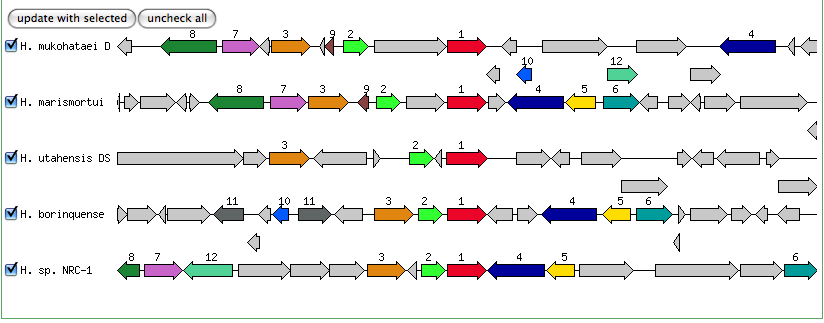Difference between revisions of "Karen's Assignment"
| Line 17: | Line 17: | ||
[http://img.jgi.doe.gov/cgi-bin/geba/main.cgi?section=GeneDetail&page=geneDetail&gene_oid=644032129 Kef-type K+ ransport system, predicted NAD-binding component]<br> | [http://img.jgi.doe.gov/cgi-bin/geba/main.cgi?section=GeneDetail&page=geneDetail&gene_oid=644032129 Kef-type K+ ransport system, predicted NAD-binding component]<br> | ||
| + | |||
| + | 2271340..2272527(+) | ||
| + | |||
[http://img.jgi.doe.gov/cgi-bin/geba/main.cgi?section=GeneDetail&page=geneDetail&gene_oid=644032854 Kef-type K+ transport system, membrane component]<br> | [http://img.jgi.doe.gov/cgi-bin/geba/main.cgi?section=GeneDetail&page=geneDetail&gene_oid=644032854 Kef-type K+ transport system, membrane component]<br> | ||
[http://img.jgi.doe.gov/cgi-bin/geba/main.cgi?section=GeneDetail&page=geneDetail&gene_oid=644031768 K+ transport system, NAD-binding component]<br> | [http://img.jgi.doe.gov/cgi-bin/geba/main.cgi?section=GeneDetail&page=geneDetail&gene_oid=644031768 K+ transport system, NAD-binding component]<br> | ||
Revision as of 16:32, 24 September 2009
Potassium homeostasis
How does our species maintain potassium homeostasis?
In JGI's list of genes with predicted functions, I found the following 10 genes related to K+:
K+ transport system, NAD-binding component
2603205..2603861(+)
K+ transport system, NAD-binding component
2199065..2199751(+)
K+ transport system, NAD-binding component
2210390..2211088(-)
Kef-type K+ ransport system, predicted NAD-binding component
2271340..2272527(+)
Kef-type K+ transport system, membrane component
K+ transport system, NAD-binding component
Trk-type K+ transport system, membrane component
K+ transport system, NAD-binding component
K+ transport system, NAD-binding component
NhaP-type Na+(K+)/H+ antiporter
I found no genes with predicted functions that are associated with Cl- from JGI
In RAST, I found seven distinct genes (some of which were called multiple times) related to potassium homeostasis:
Cobalt-zinc-cadmium resistance protein
Phosphoribosylglycinamide formyltransferase (EC 2.1.2.2) / Phosphoribosylaminoimidazolecarboxamide formyltransferase (EC 2.1.2.3)
Hydroxyacylglutathione hydrolase (EC 3.1.2.6)-1
Hydroxyacylglutathione hydrolase (EC 3.1.2.6)-2
Trk system potassium uptake protein trkA-1
Trk system potassium uptake protein trkA-2
Trk system potassium uptake protein trkA-3
Trk system potassium uptake protein trkA-4
Potassium uptake protein TrkH
Kef-type K+ transport systems (NAD-binding component fused to domain related to exopolyphosphatase)-1
Kef-type K+ transport systems (NAD-binding component fused to domain related to exopolyphosphatase)-2
Potassium channel protein-1
Potassium channel protein-2
I found no genes with predicted functions that are associated with Cl- function on RAST.
Are the genes for this process highly conserved among halophiles?
Blast results for JGI genes:
Blastn results for K+ transport system, NAD-binding component
Haloarcula marismortui ATCC 43049 chromosome I, complete sequence
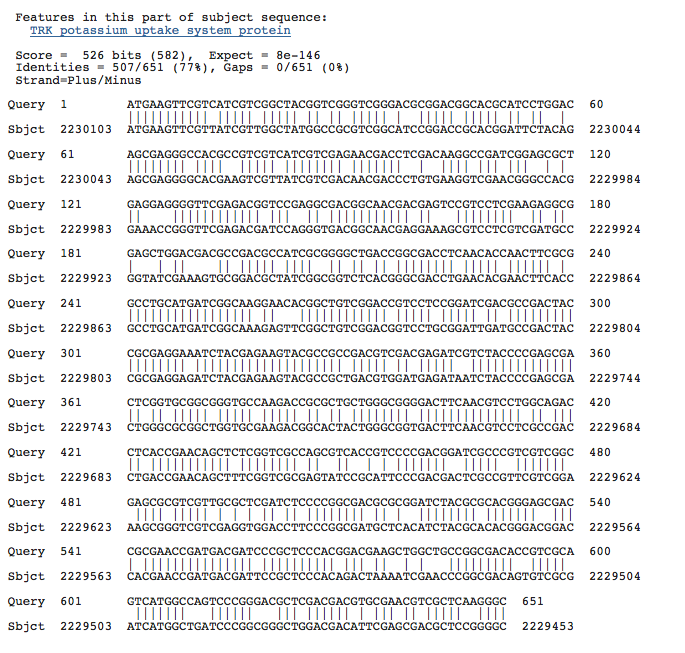
Halobacterium salinarum complete genome, strain R1
Halobacterium sp. NRC-1, complete genome

Blastn results for K+ transport system, NAD-binding component
Haloarcula marismortui ATCC 43049 chromosome I, complete sequence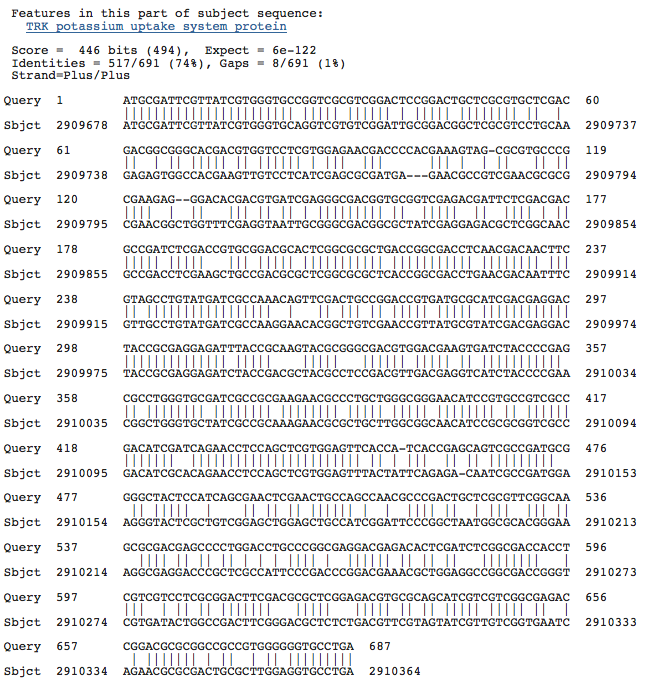
Halobacterium salinarum complete genome, strain R1
Halobacterium sp. NRC-1, complete genome
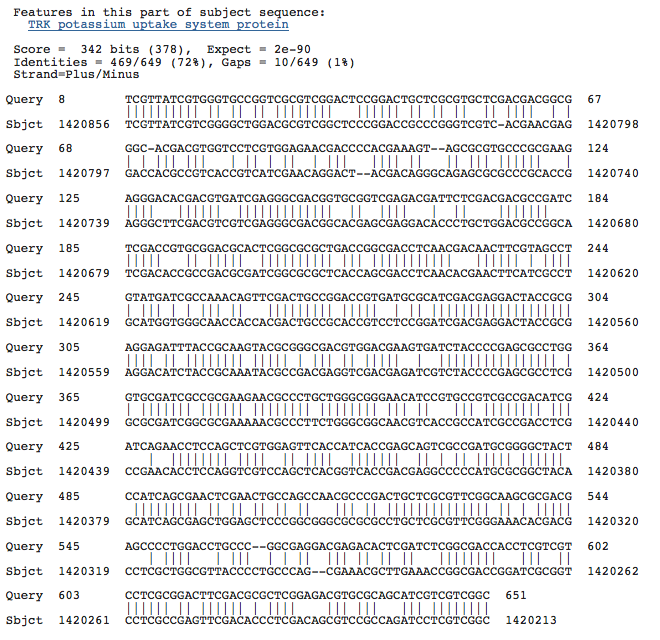
Blastn results for K+ transport system, NAD-binding component
Haloarcula marismortui ATCC 43049 chromosome I, complete sequence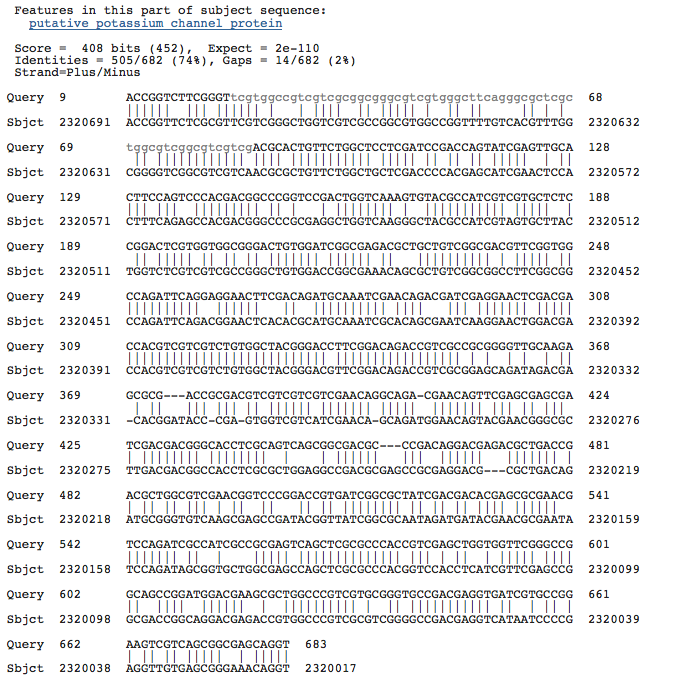
Blastn results for Kef-type K+ ransport system, predicted NAD-binding component
Haloarcula marismortui ATCC 43049 chromosome I, complete sequence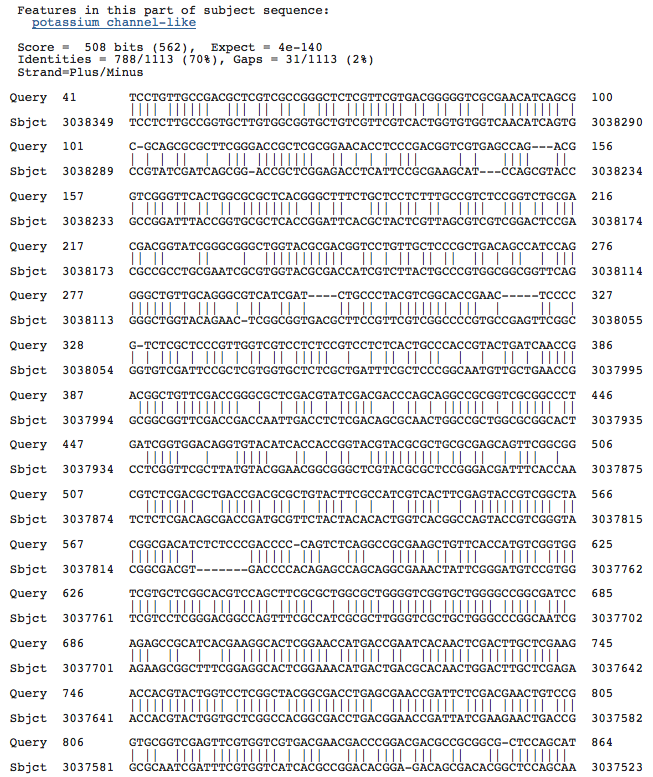
Halorubrum lacusprofundi ATCC 49239 chromosome 1, complete sequence
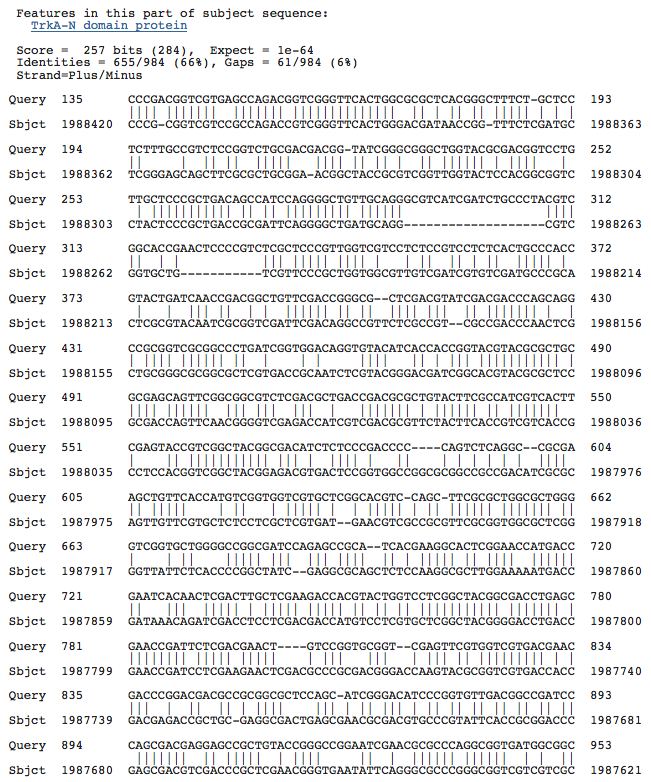
Halobacterium salinarum complete genome, strain R1
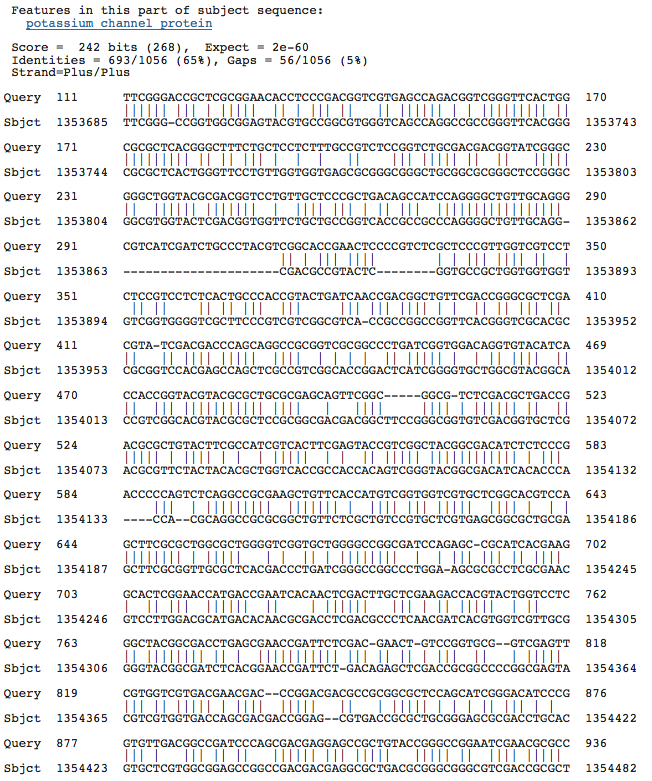
Halobacterium sp. NRC-1, complete genome
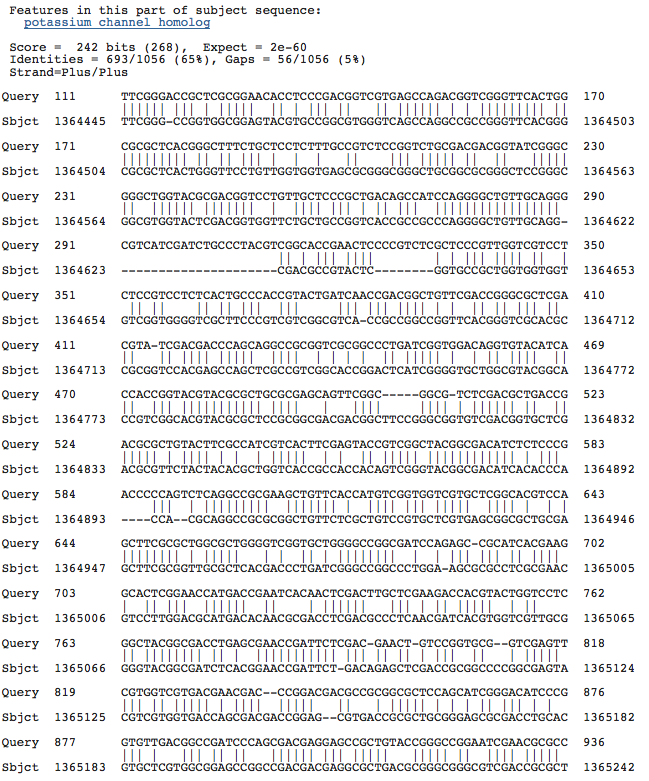
Natronomonas pharaonis DSM 2160 complete genome
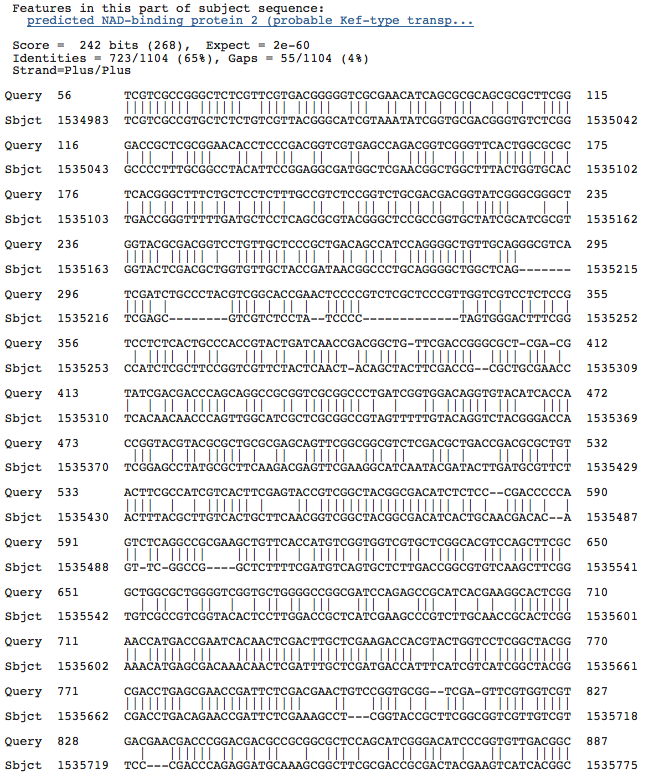
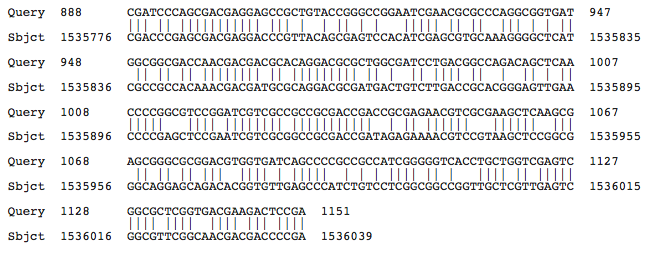
Blastn results for Kef-type K+ transport system, membrane component
Halorubrum lacusprofundi ATCC 49239 chromosome 1, complete sequence
Haloarcula marismortui ATCC 43049 chromosome I, complete sequence


Blastn results for K+ transport system, NAD-binding component
Halorubrum lacusprofundi ATCC 49239 chromosome 1, complete sequence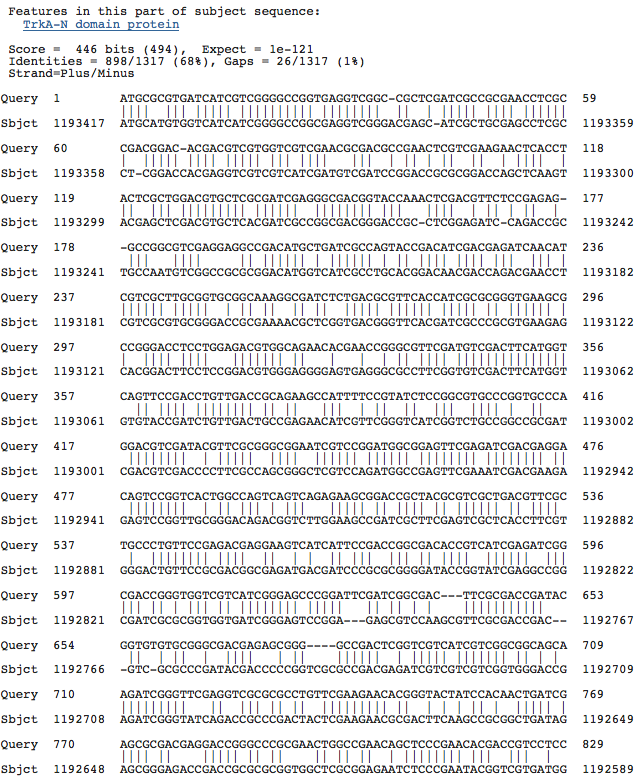
Natronomonas pharaonis DSM 2160 complete genome
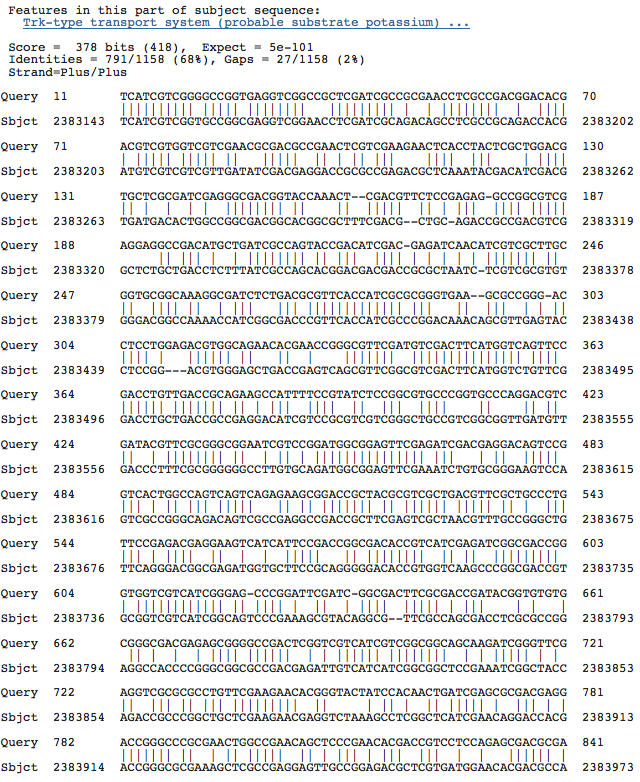
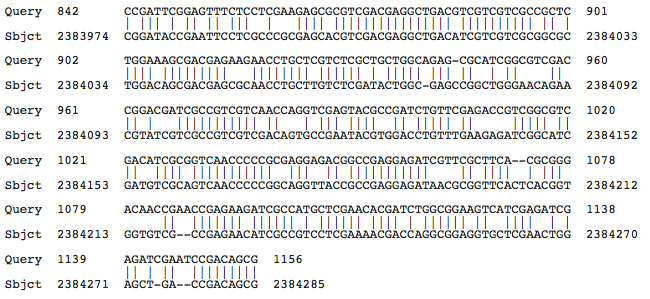
Blastn results for Trk-type K+ transport system, membrane component
Natronomonas pharaonis DSM 2160 complete genome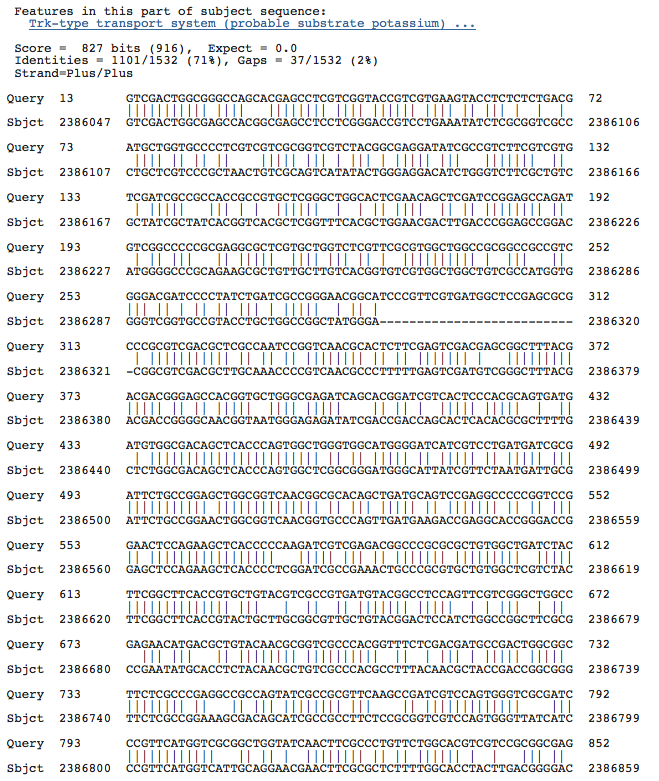
[Halorubrum lacusprofundi ATCC 49239 chromosome 1, complete sequence http://www.ncbi.nlm.nih.gov/sites/entrez?cmd=Retrieve&db=nucleotide&dopt=GenBank&RID=BJ9VZPHM01N&log%24=nuclalign&blast_rank=3&list_uids=222451341]

Haloarcula marismortui ATCC 43049 chromosome I, complete sequence
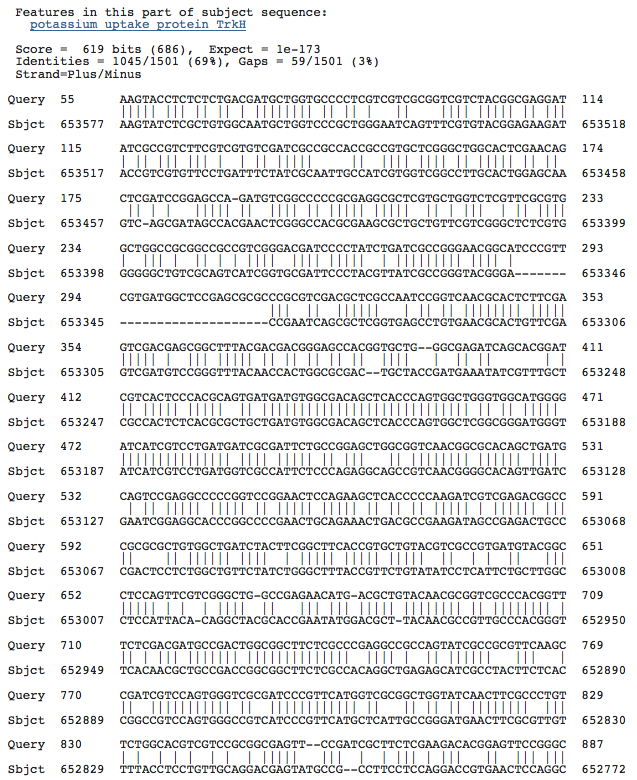
Halobacterium salinarum PHS3 plasmid complete genome, strain
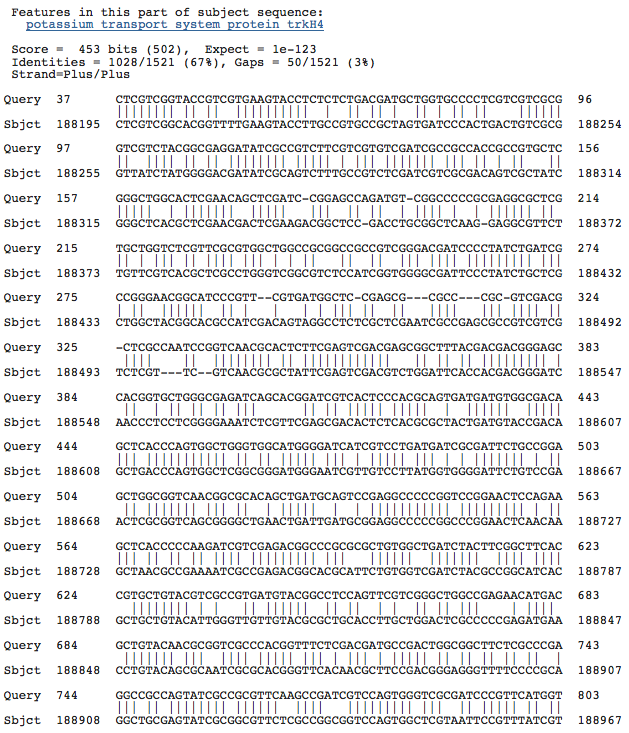
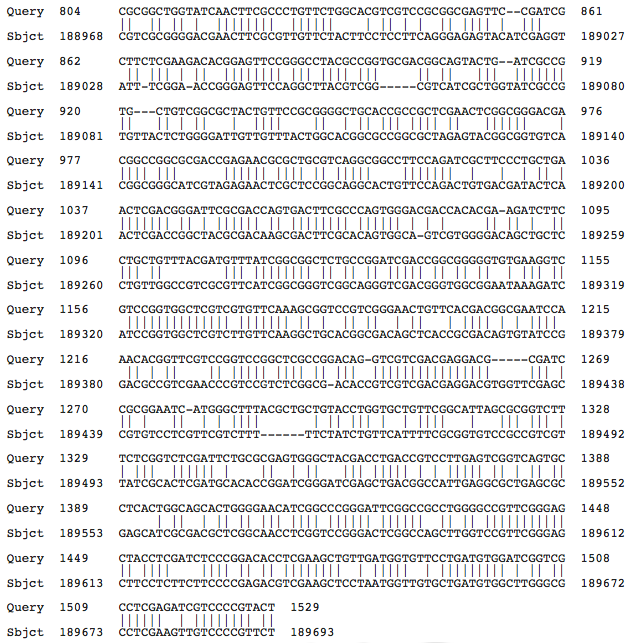
Blastn results for K+ transport system, NAD-binding component
Haloarcula marismortui ATCC 43049 chromosome I, complete sequence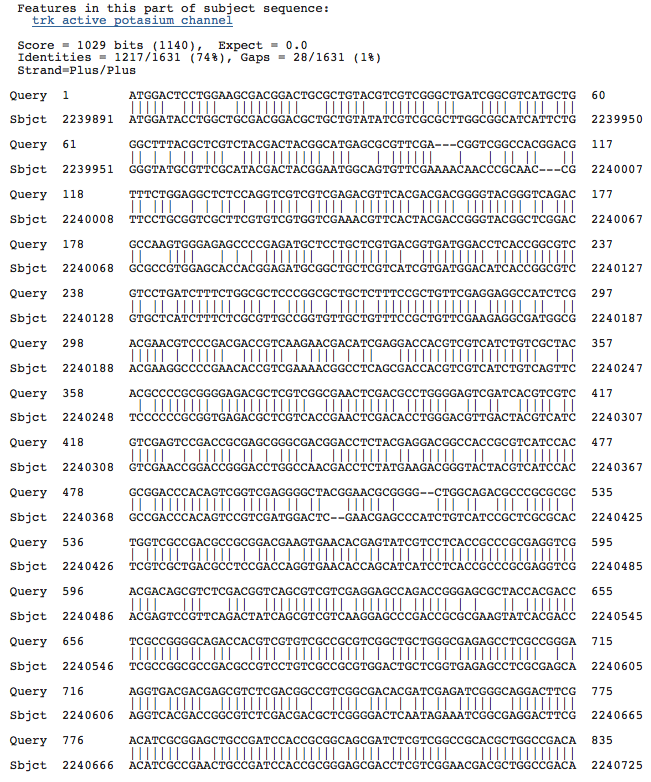
Halobacterium salinarum complete genome, strain R1

Halobacterium sp. NRC-1, complete genome
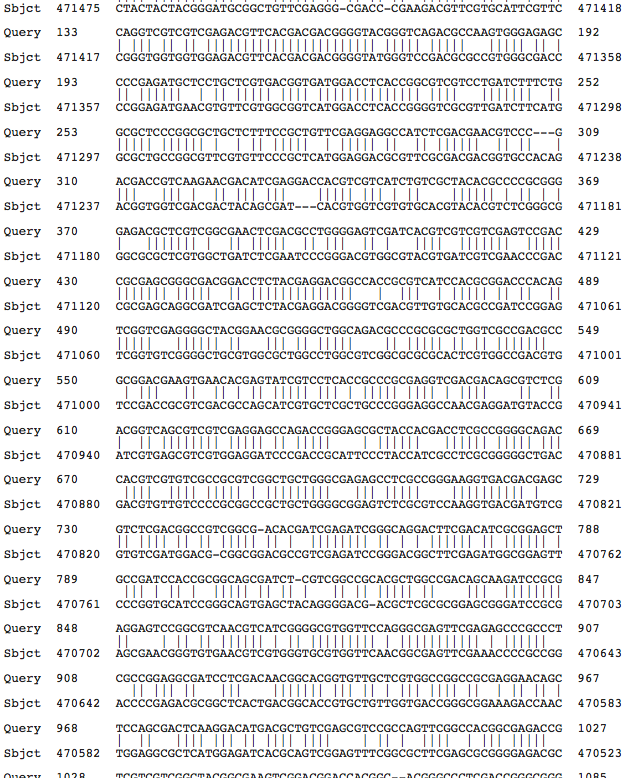
Halorubrum lacusprofundi ATCC 49239 chromosome 1, complete sequence
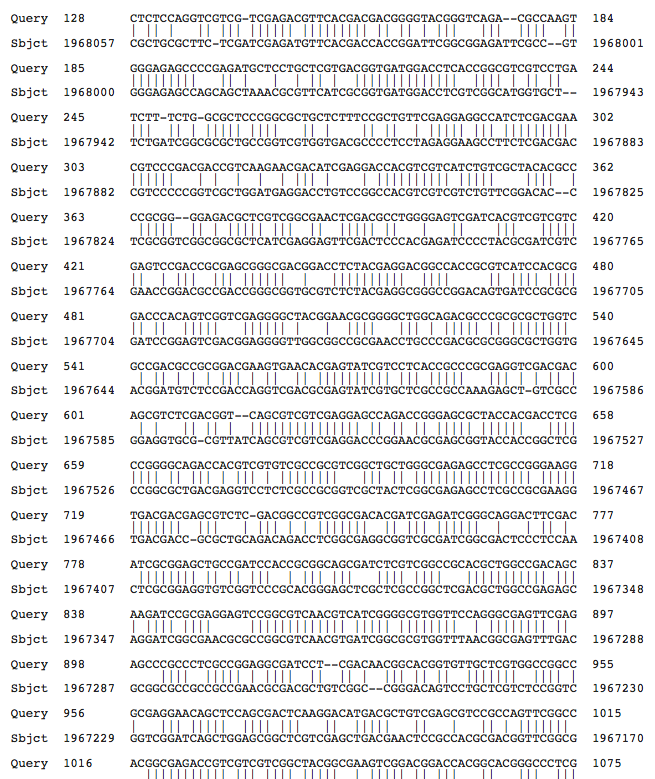
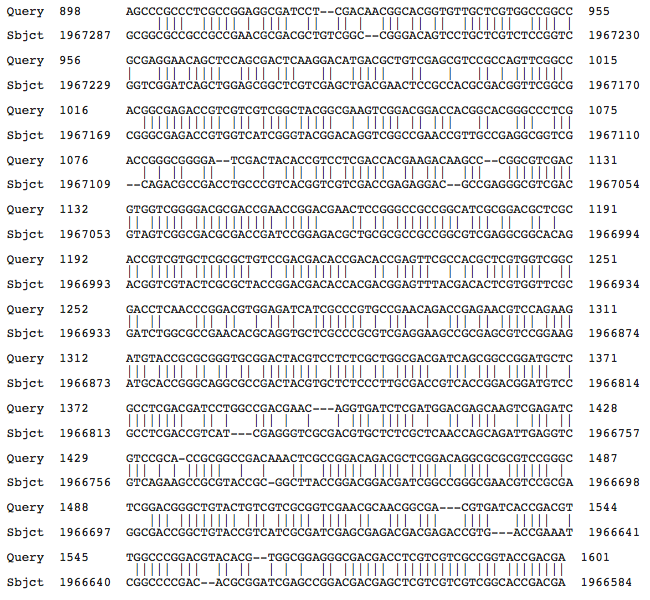
The blastn results are becoming very repetitive. I think at this point, the way to attack this problem may be to look into this list of 5-6 species that seem to share the potassium proteins seen in our species. If I can find a common thread in how other species are utilizing the same potassium homeostasis machinery, it will tell me a great deal about how our own species is using all these potassium related genes.
It is important to note that many of these genes were also related to the species Halorhabdus utahensis. I did not include the blastn results for this species because Blast could not specify which gene segment these matches were a part of. I believe this was not included simply because this species has not been annotated (or the annotation has not been entered into blast). In any comparison of species that takes place after this, I will need to include this species as well.
Is potassium homeostasis related to our species ability to survive/thrive in high salinity environments? How?
"Cell membranes are freely permeable to water, so the only way to prevent the loss of cellular water under high salt conditions is to increase the internal solute concentration. Halotolerantand halophilic microorganisms therefore accumulate high solute concentrations within the cytoplasm." [1]
I am beginning to understand potassium homeostasis and how it may be useful to our organism to survive in high salt concentrations by first researching how other known species utilize this mechanism. In a paper by Strahl and Greie, the Halobacterium salinarum species use of potassium homeostasis to maintain life in a high salinity environment is described. Apparently these organisms maintain life in such conditions by creating an equimolar condition within their cytoplasm. KCl is the preferred ion to create this equal osmolality for this halobacterium resulting in osmotic equilibrium with the surrounding environment. The K+ ion enters the cell by both passive transport mechanisms as well as active transport mechanisms. A gene, kdpFABC, has been discovered in this organism that codes for homologs of a bacterial ATP-driven K+ uptake system. Deletion of this gene is detrimental to organism survival in limiting K+ conditions. This paper also mentions that this mechanism is unique to this and another species of halobacterium because other halophiles utilize organic solutes to equalize osmotic pressures in high salinity environments. I must determine whether or not potassium homeostasis could be a mechanism of maintaining osmotic equilibrium in our species.
A paper by Oren et al. describes another species, Salinibacter ruber, that appears to be capable of surviving in high salinity environments due to the uptake of high concentrations of potassium. The finding that potassium homeostasis seems to be the mechanism of maintaining life in a high salinity environment was determined by measuring K+, Cl+, glutamate, glycine betaine, and N-alpha-acetyllysine concentrations within the cytoplasm. High amounts of K+ and Cl+ were found within the cytoplasm but low amounts of glutamate, glycine betaine, and N-alpha-acetyllysine were discovered. These three organic solutes are often associated with maintaining osmotic equilibrium in archaic halophiles that exist in high salinity environments. It is unusual that this species does not utilize these organic solutes to maintain homeostasis but instead seems to be utilizing the inorganic molecule KCl. This paper provides another example of potassium concentrations being utilized to maintain life in high salinity environments. I need to determine if our species is using this inorganic molecule or the more common organic molecules to maintain osmotic balance in a high salinity environment.
